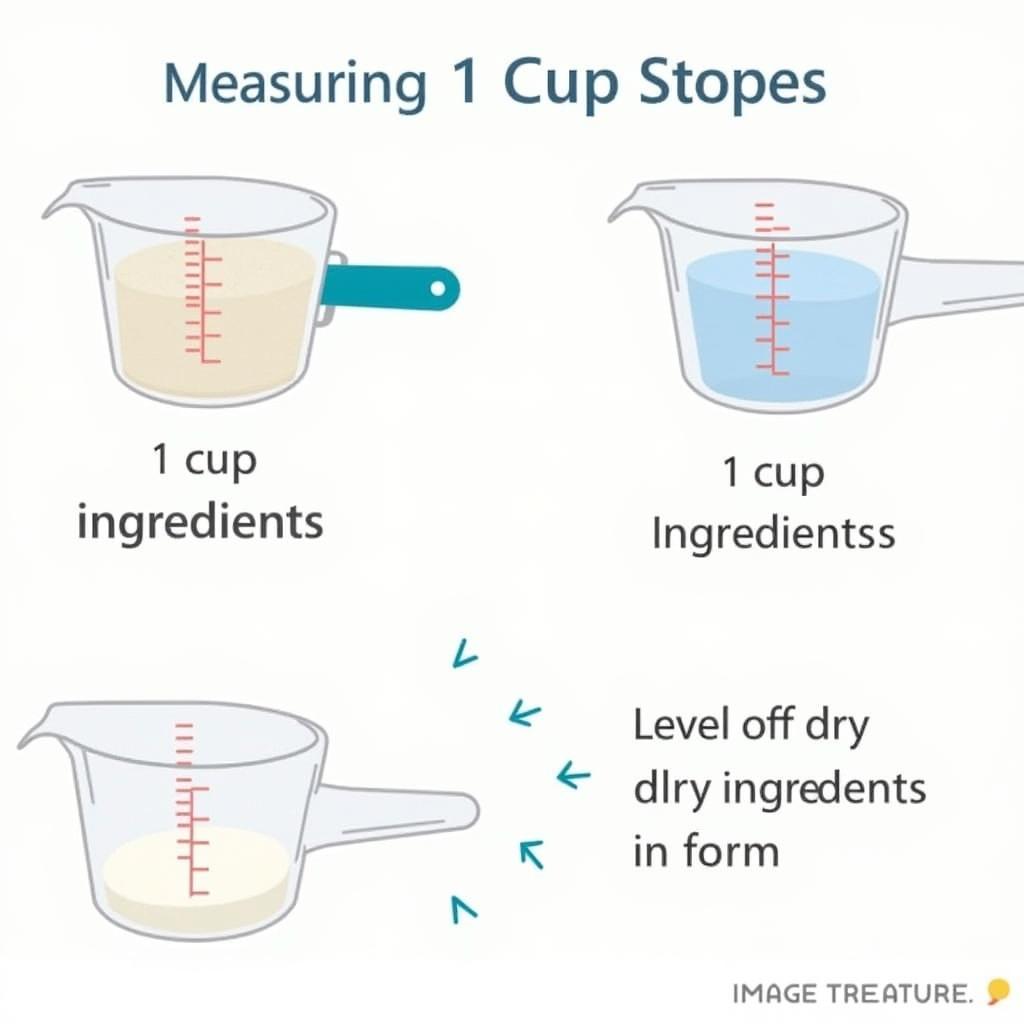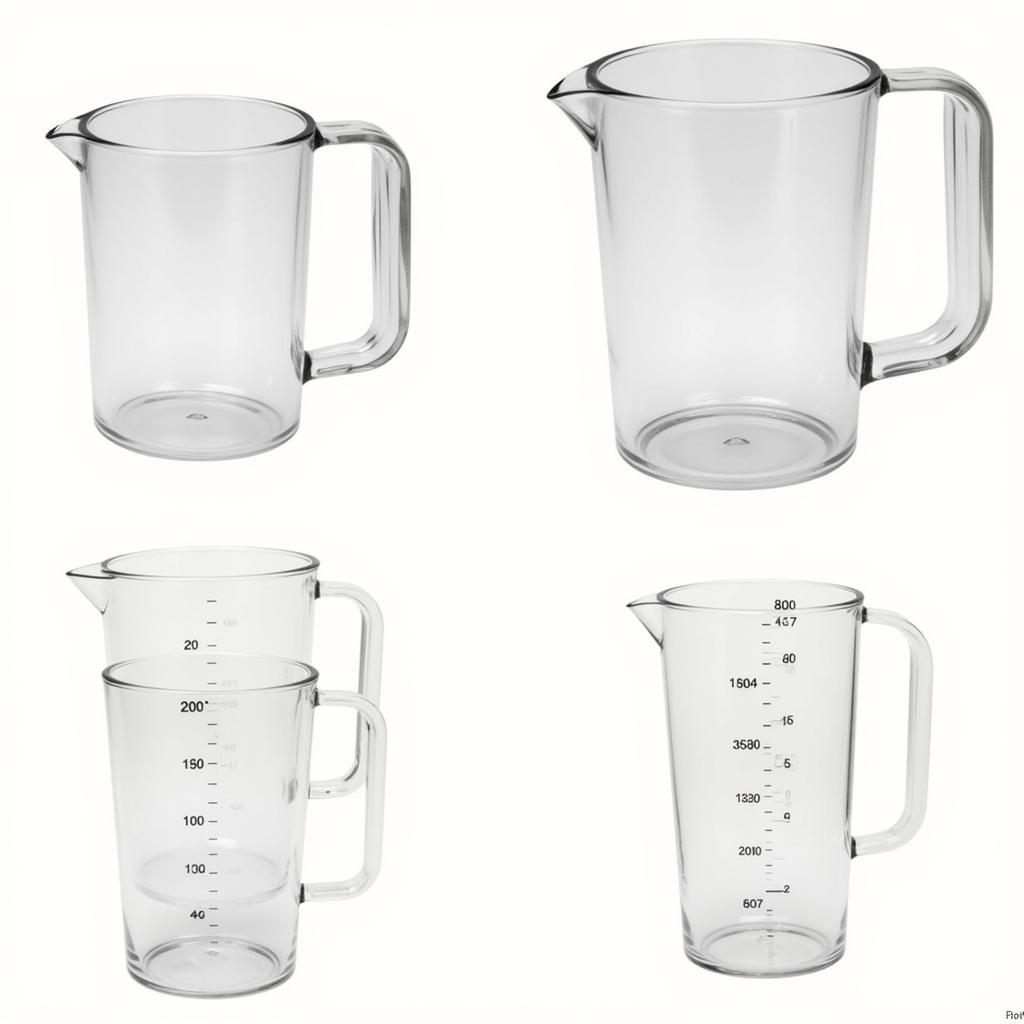One cup is a common unit of measurement in cooking and baking, but How Much Is 1 Cup exactly? Understanding this seemingly simple question can be crucial for achieving culinary success. This guide will explore the various aspects of “how much is 1 cup,” providing clarity and practical advice for both novice and experienced cooks.
Decoding the Cup: Volume vs. Weight
 1 Cup Measurement Units
1 Cup Measurement Units
While “1 cup” refers to a volume, its weight equivalent varies significantly depending on the ingredient being measured. For instance, 1 cup of flour weighs considerably less than 1 cup of sugar. This difference arises from the density of each ingredient. how much is 1 cup of flour in grams will give you the precise weight of flour in grams. Understanding this distinction between volume and weight is essential for accurate recipe execution.
How Much is 1 Cup in Grams: A Practical Look at Common Ingredients
The weight of 1 cup varies greatly depending on the ingredient. Here’s a look at some common kitchen staples:
- Flour: Approximately 120-140 grams.
- Sugar: Around 200 grams.
- Water: Approximately 240 grams (equivalent to 240 ml).
- Milk: Roughly 240 grams.
For those working with smaller quantities, knowing how much is 10g in cups can be helpful. For a comprehensive understanding of various ingredient conversions, you might want to check how much is 1 cup in grams.
Why Precise Measurement Matters in Cooking
Accurate measurements are fundamental to successful cooking and baking. Using the correct amount of each ingredient ensures the intended flavor, texture, and consistency of the final product. Too much flour can result in a dry, dense cake, while too little liquid can lead to a crumbly, brittle outcome. how much is 1 cup of milk is crucial for recipes relying on milk as a primary ingredient.
 Using Correct Measuring Cups
Using Correct Measuring Cups
Mastering the Art of Measurement: Tips and Tricks
-
Use the Right Tools: Invest in a set of both dry and liquid measuring cups. Dry measuring cups are designed to be filled and leveled off with a straight edge, while liquid measuring cups have a spout for pouring and are marked with measurement lines.
-
Level Off Dry Ingredients: When measuring dry ingredients like flour or sugar, do not scoop directly from the bag. Instead, gently spoon the ingredient into the measuring cup and level off the excess with a straight edge.
-
Measure Liquids at Eye Level: When using a liquid measuring cup, place the cup on a flat surface and view the measurement lines at eye level to ensure accuracy.
-
Weight is Best: For the most precise measurements, especially in baking, using a kitchen scale is recommended. This eliminates the variability inherent in volume measurements and ensures consistent results. how much is 1 cup of butter in grams illustrates the importance of weight measurements for specific ingredients.
How Much is One Cup of Water?
One cup of water is equivalent to 8 fluid ounces or 240 milliliters.
Conclusion
Understanding “how much is 1 cup” is more than just knowing a single number; it’s about grasping the nuances of measurement and their impact on culinary outcomes. By utilizing the right tools and techniques, you can ensure accuracy in your recipes and consistently achieve delicious results.
FAQ
- What is the difference between a dry and a liquid measuring cup?
- Why is it important to level off dry ingredients?
- How do I measure liquids accurately?
- Is it better to measure by weight or volume?
- What is the weight of 1 cup of sugar?
- How many milliliters are in 1 cup?
- Where can I find more information on converting measurements?
Common Scenarios
- Baking a cake: Precision in measuring ingredients is crucial for achieving the desired texture and rise.
- Following a recipe: Accurate measurements ensure the intended flavor profile and consistency of the dish.
- Converting recipes: Understanding cup equivalents in other units is essential for adapting recipes.
Further Exploration
Consider exploring related topics like converting cups to other units of measurement (grams, milliliters, ounces) and the specific weight of various common ingredients.
For any assistance, feel free to contact us at Phone Number: 0372999996, Email: [email protected] or visit our address: 236 Cầu Giấy, Hà Nội. Our customer service team is available 24/7.
